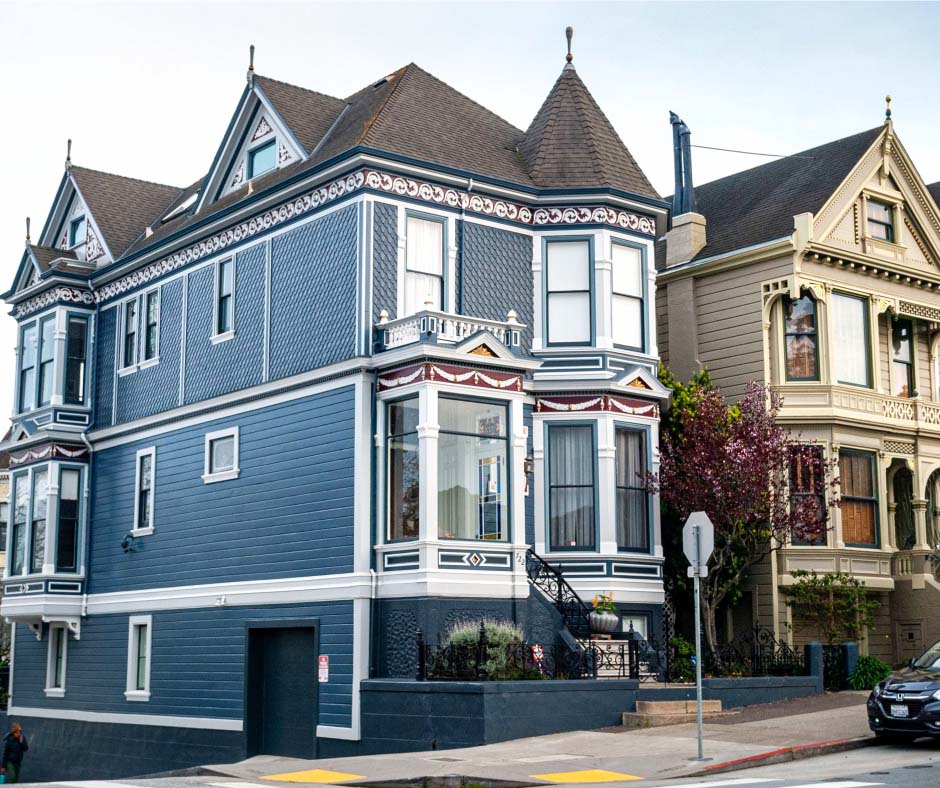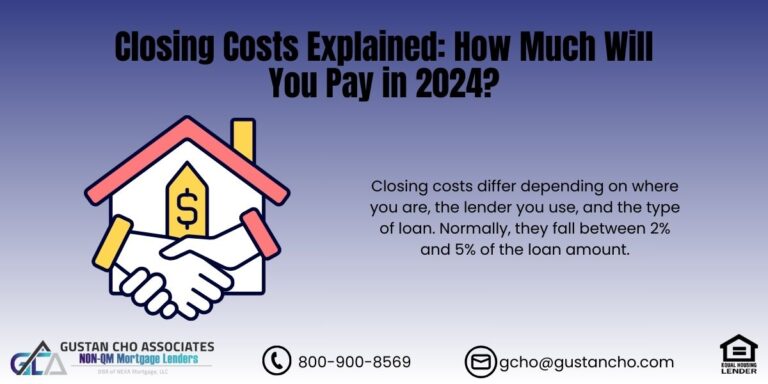Using Seller Concessions For Closing Costs on Home Purchase
In this blog, we will cover using seller concessions for the closing costs on a home purchase. We will go over what seller concessions are and how it works on home purchase transactions. Seller concessions can be used for closing costs. However, seller concessions cannot be used for the down payment on a home purchase.
On the flip side, you cannot ask for too much seller concessions. You cannot keep the overages in seller concessions. Overages in seller concessions need to go back to the home seller. In the following paragraphs, we will cover using seller concessions for the closing costs on a home purchase.
How Can a Homebuyer Get Seller Concessions?
The real estate agent will help structure the right amount of seller concession for the home buyer so the borrower does not have to come up with all of the closing costs. During a buyer’s housing market, it is easy to get seller concessions from home sellers.
How Much Is Required To Buy a Home?
The two main costs when buying a home is the down payment and closing costs. There are a lot of costs involved when purchasing a new home. The down payment on a home purchase is a fixed set percentage. However, the closing costs of a home purchase are dependent on many factors.
Closing costs depend on the type of property and the county and state in which the property are located. Every borrower has a different figure for closing costs.
What Are Closing Costs?
Most closing costs can be paid with a seller’s concession by the home seller and/or lender credit by the lender in lieu of higher mortgage rates. Borrowers with lower credit scores will get a loan level pricing adjustment (LLPA) on mortgage rates. Borrowers with under 600 credit scores may have to pay discount points. Discount points are additional closing costs. Discount points can be paid with seller concessions.
Can You Use Seller Concessions For Down Payment Requirements and Closing Costs?
The down payment on a home purchase is easy to calculate. The down payment is a percentage of the purchase price. Every loan program has a different down payment requirement. VA and USDA loans do not require any down payment. Lenders offer 100% financing on VA and USDA loans at competitive rates due to the government guarantee.
HUD Down Payment Guidelines on FHA Loans
The down payment requirements depend on the individual loan program. The minimum down payment requirement on FHA loans is 3.5% for homebuyers with at least a 580 credit score or higher. For homebuyers with credit scores under 580 and down to 500 FICO, HUD requires a 10% down payment. Besides the down payment requirements, there are closing costs. HUD allows a maximum of up to a 6% seller concessions from home sellers for homebuyer’s closing costs.
Fannie Mae Down Payment Guidelines on Conventional Loans
The minimum down payment on conventional mortgage loans for first-time homebuyers is 3%. A first-time homebuyer is defined as a homebuyer who did not have an interest in a home in the past three years. Otherwise, the minimum down payment required is 5% on conventional loans. There are 3% down payment conventional mortgage loan programs as well. But the credit criteria are stricter than the 5% down payment conventional mortgage loan program. Fannie Mae and Freddie Mac allow up to a 3% seller concession on owner-occupant primary homes and 2% seller concessions on investment homes.
Non-QM Down Payment Requirements
The down payment requirements are larger on non-QM loans than on government and conventional loans. Non-QM loans require a 10% to 30% down payment on home purchases. Besides the down payment, a home buyer will also encounter closing costs that sometimes can be more than the down payment. What closing costs are and how to pay them through third-party lender credit and/or concessions.
What Are Seller Concessions and Closing Costs?
Closing costs include title charges, transfer stamps, inspection fees, appraisal fees, discount points, underwriting fees, attorney fees, and other fees depending on the state you are closing your new home at. Besides closing costs, a home buyer will probably need to spend money on moving costs, new furniture, and minor repairs on their new home. Requesting a seller concession towards a buyer’s closing costs can be a phenomenal advantage to the new home buyer. Homebuyers do not want to spend every penny they have on the cost of buying their home
Down Payment Versus Closing Costs on Home Purchase
All down payment requirements are a fixed percentage nationwide. For example, FHA loans will require a 3.5% down payment requirement on a home purchase in Hawaii, California, Illinois, Wisconsin, or Illinois. The down payment is always a fixed percentage of the purchase price of a home. However, closing costs differ depending on the city, county, township, or state. Closing costs can vary depending on the individual transaction. Closing costs numbers is always a variable depending on teh borrower, the type of property, where the property is located, and the borrower.
Are Closing Costs Different Depending on the State?
Florida leads the nation as having the highest number of in-migration of not just individuals and families but the highest number of small business owners moving to the state than any other state in the nation. This is due to having no state income taxes. Besides no state income taxes, Florida has one of the lowest tax rates on just about everything.
The Governor and state lawmakers are smart and know how to run state government. It is not how much you take in but rather what you spend. Despite the low state and affordable cost of living in Florida, closing costs on a purchase or refinance is higher than high taxed states such as Illinois.
Why Does Illinois Have Lower Closing Costs Than Florida?
Governor Ron DeSantis recently said that he believes in collecting 10 cents on the dollar and investing 90 cents to make his state better and attract new taxpayers than collecting 90 cents in taxes and only investing 10 cents where taxpayers will be fleeing the state. Illinois, led by JB Pritzker being run into the ground due to high and increasing taxes. I
llinoisans are getting voter’s remorse for electing J.B. Pritzker. Pritzker’s solution to fixing the state’s major budget deficit is to keep increasing and creating new taxes. Pritzker has raised state taxes over 20 times since he took office in 2018. The constant tax increases in Illinois are taking a toll on the out-migration numbers. More and more Illinoisans are fleeing to states with lower taxes and low costs of living such as Florida. However, closing costs in Illinois on a home purchase is substantially lower than low tax states such as Florida.
Maximum Amount of Seller Concessions Allowed

Seller concessions and closing costs go hand in hand. Sellers’ credit towards closing costs is allowed with most mortgage loan programs. HUD allows up to 6% in seller concessions toward buyers closing costs. VA allows 4%. USDA allows 6%. Owner-occupant conventional loans allow up to 3%. Investment properties are capped at 2% with conventional loans. In many cases, having a seller concession makes a real estate purchase happen. This is because many real estate home buyers are limited in funds.
Some home buyers only have the down payment and cannot afford closing costs. There are two ways of covering closing costs on a home purchase. The first method is by getting credit from the seller. The second method is by getting a lender’s credit towards closing costs in lieu of accepting a higher mortgage rate.
Case Scenario on Covering Closing Costs
For example, let’s say John Smith is buying a $200,000 home in Miami, Florida. John Smith gets approved for an FHA loan at a rate of 3.25%. John Smith needs to come up with a 3.5% down payment or $7,000. The down payment can be gifted to John Smith by a family member. Say John Smith does not have any additional funds besides the $7,000.
What Is The Maximum Seller Concessions By Home Sellers?
John Smith can get credit by the seller of up to $12,000 from the seller of the subject property. Normally seller concessions cannot exceed 6% of the purchase price. Say the closing costs for John Smith’s new home are $6,000. The seller can contribute $6,000 towards John Smith’s closing costs. In the event, that the seller offers a $12,000 credit to John Smith and John Smith’s closing costs are only $6,000, who gets the difference of the $6,000 leftover credit? The balance goes back to the seller.
What Happens To Overages of Seller Concessions?
Overages in seller concessions can go to buying down the mortgage interest rates with discount points. John Smith cannot pocket the leftover credit and he cannot use it toward moving costs. Homebuyers who need more information on this topic or any other lending questions, please contact us at Non-QM Mortgage Lenders at 800-900-8569 or text us for a faster response. Or email us at gcho@gustancho.com. The team at Non-QM Mortgage Lenders is available 7 days a week, during evenings, on weekends, and holidays.






